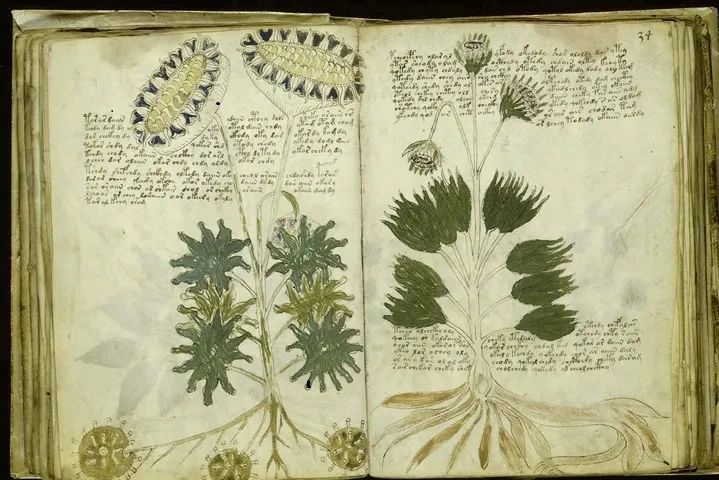In the shadowy realm of historical mysteries, few artifacts have captivated scholars and researchers quite like the Voynich Manuscript. This enigmatic medieval codex, hand-written in an unknown script called Voynichese, has defied decipherment for centuries, becoming a tantalizing puzzle that continues to baffle experts worldwide.
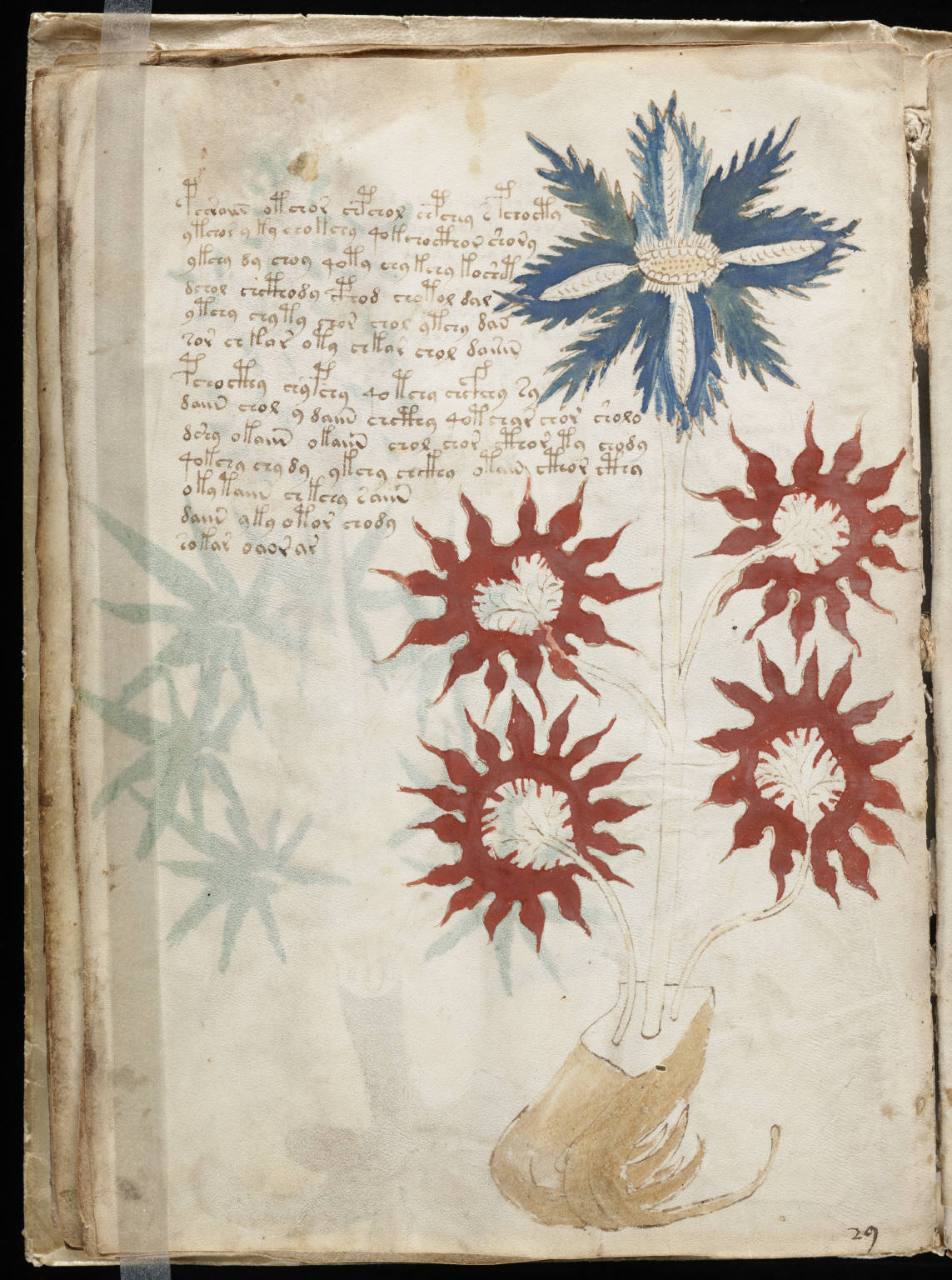
The mysterious Voynich Manuscript, showing its unique script and illustrations. Credit: Wikimedia Commons
The Physical Artifact: A Mysterious Medieval Treasure
Crafted on vellum dating back to the early 15th century (1404-1438), the Voynich Manuscript is no ordinary document. Measuring approximately 23.5 cm by 16.2 cm, its pages are filled with intricate illustrations and text in a completely unknown language. The manuscript’s pages are adorned with bizarre botanical drawings, astronomical charts, and cryptic diagrams that suggest a depth of knowledge far beyond typical medieval texts.
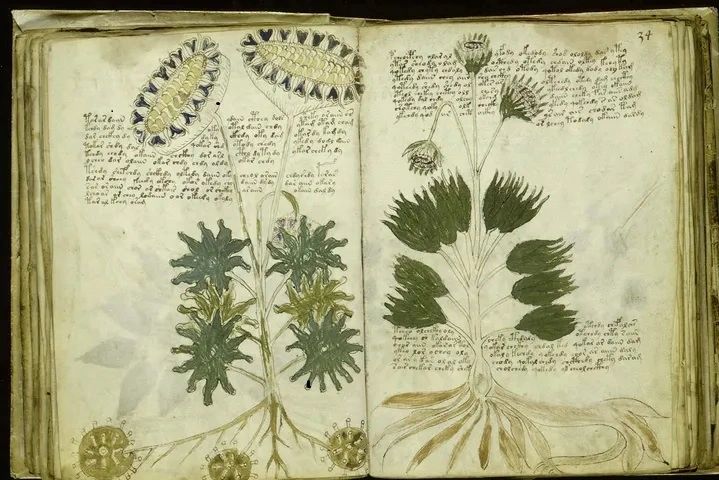
Detailed botanical illustrations from the manuscript, showing its unique artistic style. Credit: Awesome Success
Carbon dating confirms its origins in the early Renaissance period, likely created in Italy. The manuscript’s vellum was meticulously prepared from at least fourteen to fifteen entire calfskins, indicating significant effort and resources were invested in its creation. This attention to detail only deepens the mystery surrounding its purpose and origin.
A Journey Through Distinguished Hands
The manuscript’s provenance reads like a historical thriller. It passed through the hands of notable figures, including Holy Roman Emperor Rudolf II, who was known for his fascination with the occult and alchemy. The first confirmed owner was Georg Baresch, a 17th-century alchemist from Prague, who was utterly perplexed by the manuscript’s indecipherable text.
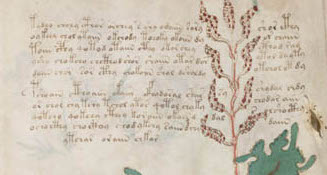
A page from the manuscript showing its astronomical diagrams. Credit: Yale Beinecke Library
Later, the manuscript was acquired by Wilfrid Voynich, a Polish book dealer, in 1912. Since 1969, it has been housed in Yale University’s Beinecke Rare Book and Manuscript Library, where it continues to intrigue researchers and scholars from around the globe.
The Cryptographic Conundrum
What makes the Voynich Manuscript truly extraordinary is its completely unknown script. Cryptographers, linguists, and computer scientists have attempted to crack its code for decades, employing increasingly sophisticated techniques. Statistical analyses reveal that the text exhibits language-like properties, suggesting it’s not mere gibberish.
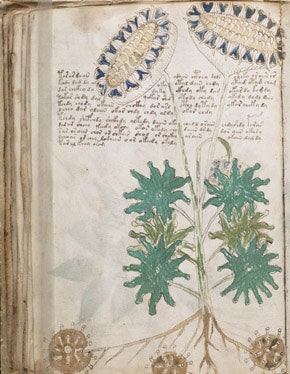
Close-up of the manuscript’s mysterious text. Credit: The New Yorker
The manuscript contains approximately 240 pages, with text written from left to right. Interestingly, the script uses about 20-25 distinct characters, with a few dozen rare characters appearing only once or twice. Despite numerous attempts, no one has successfully translated even a single paragraph with any credibility.
Whether it contains profound hidden knowledge or is an elaborate medieval hoax, the Voynich Manuscript continues to whisper its secrets, waiting for the day when its true meaning might finally be revealed.
References:
Voynich Manuscript – Wikipedia – link
Yale Beinecke Library – Voynich Manuscript – link
The New Yorker – The Mystery of the Voynich Manuscript – link
Categories: Ancient Manuscripts, Cryptography, Historical Mysteries, Medieval History, Unsolved Mysteries, Unsolved Mysteries
Tags: Ancient Manuscripts, Ancient Scripts, Cryptography, Historical Enigma, Medieval Art, Medieval History, Medieval Mystery, unsolved mysteries, Voynich Manuscript, Yale University
Religion: Unknown
Country of Origin: Czech Republic, Italy, United States
Topic: Historical Mystery
Ethnicity: European

